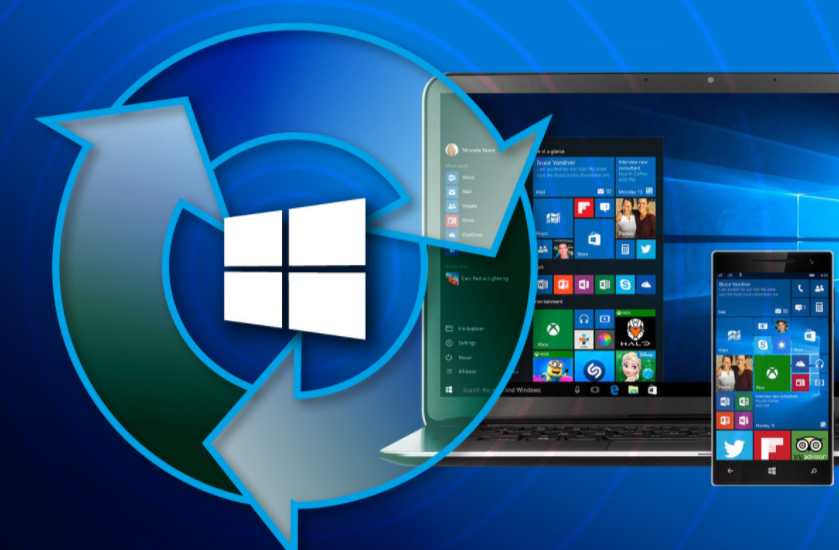Windows 10 is having a fantastic dive beginning, in just 3 weeks, after the os launched to the general public countless individuals have actually currently updated. Probably a few of the reasons that individuals are swiftly updating is due to the fact that Microsoft is supplying Windows 10 as a totally free upgrade for computer systems running Windows 7 as well as Windows 8. In addition, there a great deal of brand-new attributes, such as Cortana, the Unified Settings application which stumbles upon tools, the return of the Start food selection, which incorporates the Windows 7 Start food selection with the Start display in Windows 8.1, and also a lot more functions that you can review in my previous write right here.
Seeing that Windows 10 presents lots of brand-new functions, that it’s headed in the best instructions, which you’re obtaining it free of cost, there is no question that Microsoft desires you to update as well as swiftly. As a matter of fact, you just have one year from the day it was launch to handle the complimentary deal afterwards you’ll need to pay to update.
Nonetheless, given that Windows 10 appeared to the general public, not everybody has actually had a great experience. Some individuals have problems updating, others have actually been reporting compatibility problems, the Windows Store not upgrading applications (which has actually currently been dealt with), as well as a variety of various other troubles. As you can visualize, once individuals start having problems practically by mirror the very first point that enters your mind is just how can return from Windows 10 to my previous variation, in this situation, Windows 7.
Today, we are mosting likely to experience 3 choices, and also actions to downgrade from Windows 10 to Windows 7, in situation points aren’t exercising for you.
It’s worth to mention that the alternatives are practically the like reduction from Windows 10 to Windows 8.1, which I have actually formerly included below.
Method one: Recovery by uninstalling Windows 10
Microsoft did something new in Windows 10 that wasn’t available in Windows 8, which is adding a feature to the Settings app to allow you seamlessly go back to your previous version of the operating system.
As such, if you are having issues with Windows 10 or you simply don’t like it you have options. For example, the software giant is including the “Go back to Windows 7” feature to make the process a lot simpler. However, there is a caveat; you only have a month after you have upgraded to Windows 10 to go back.
Now, if you’re still on the one-month “trial”, you can follow the instructions below to roll back:
1- Use the Windows + I shortcut to open the Settings app.
2- Navigate to Update & security and go to Recovery.
3- If everything is set correctly on your PC, you’ll see the option Go back to Windows 7. Here simply click the Get started button.
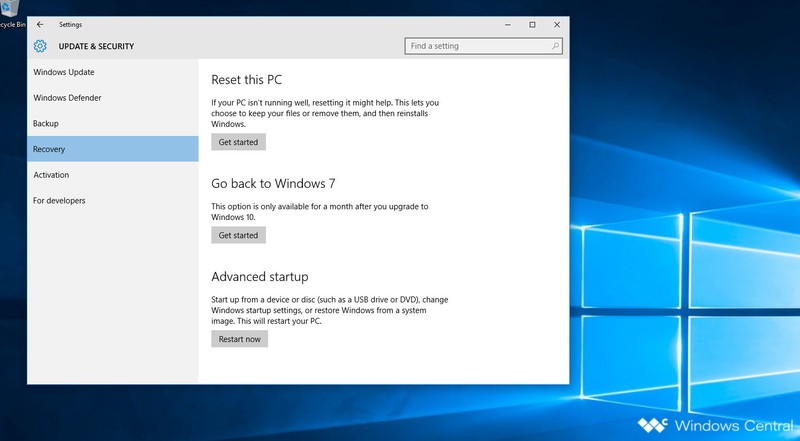
4- At this point, you will need to pick the reason you’re going back, click Next.
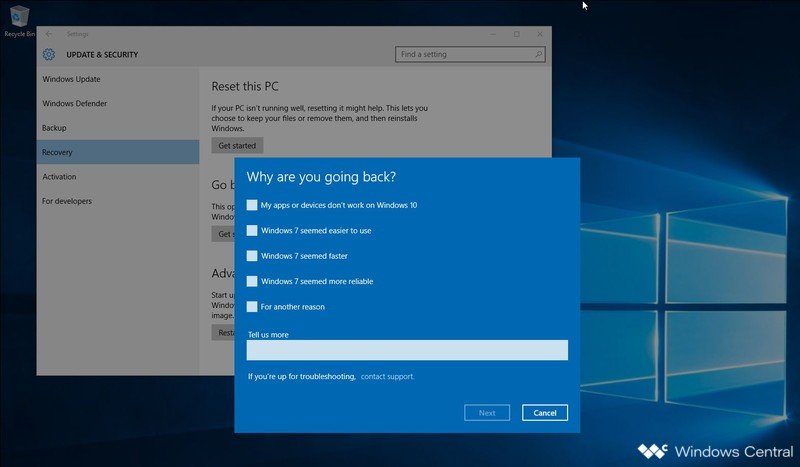
5- You will get a warning that you’ll need to reinstall some apps and programs, and you’ll lose any changes made after upgrading to Windows 10. Keep in mind that while a file backup is not necessary, but it’s highly recommended, and then click Next.
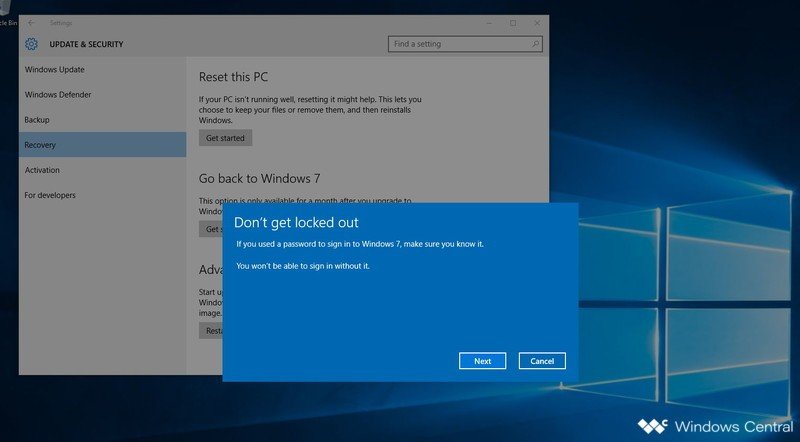
6- Make sure you know your Windows 7 password as you’ll be locked out of the system without it, and then click Next.
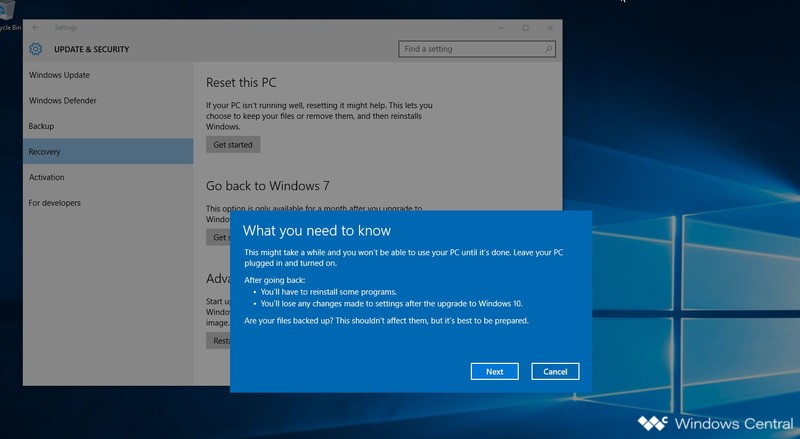
7- Finally, click the Go back to Windows 7 and to begin the downgrade process.
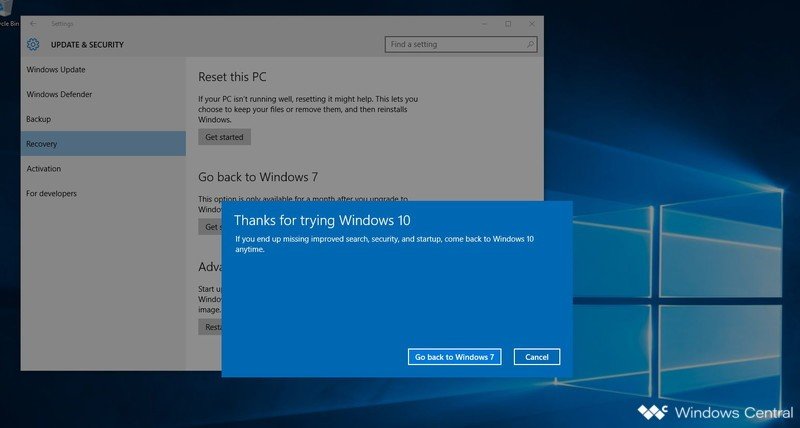
The time to complete the process should only be several minutes, but the time will vary from computer-to-computer. After you’re back in Windows 7, don’t forget to check that all your programs work correctly. As always make sure Windows is up to date, as it has probably been several weeks since and Microsoft may have already released some patches.
Method two: Downgrade by using you previous backup
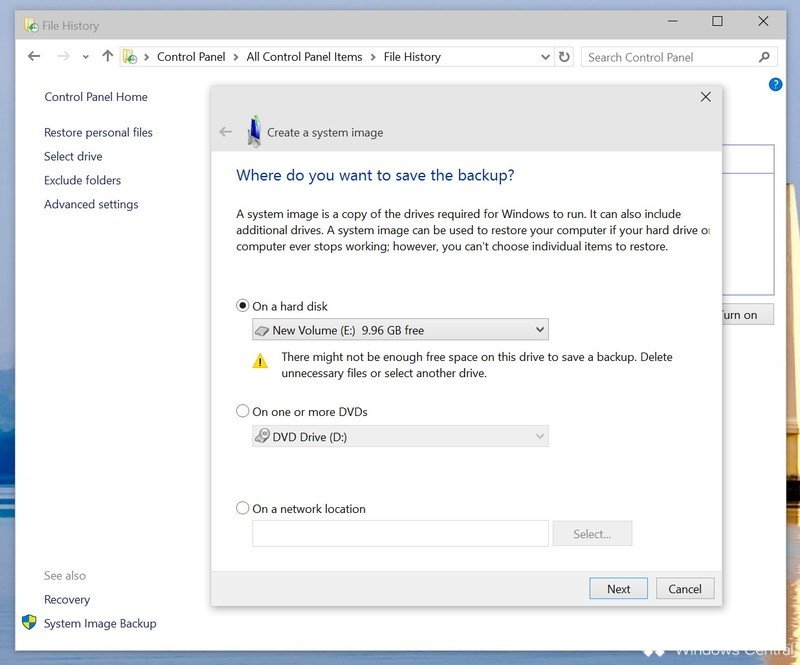
You should always keep a backup of your computer before modifying any operating system. If you haven’t upgraded to Windows 10, check out my previous post on how to prepare your computer for Windows 10. That will guide you through what you need to do before upgrading, including creating a full backup of your computer.
If you have the backup, you are haft way done. You only need to make a backup of your new files since the last full backup or simply copy all your files to an external drive. Besides, you may want to note any new software you have installed on your computer since the last backup, as you will need to reinstall them later on.
You can do this by:
- Searching for Control Panel with Cortana.
- Navigating to Programs and Features.
- Arranging the list of apps in your system by Installed On.
After you have the backup of your files, and you know the apps you need to reinstall, reboot your computer using the “repair disc”, which you’re prompted to create after creating the initial full backup.
Quick Tip: If you don’t have repair disc, you can also boot with the Windows 7 installation media to perform the recovery.
Connect the external hard drive with the backup, reboot your PC, follow these steps:
- While in the Setup wizard, click Next, and then Repair your computer.
- Select “Restore your computer using a system image that you create earlier”, and click Next.
- Select the backup to restore and click Next.
- Select the image you want to use and click Next.
- Click Next one more time and then Finish to begin with the recovery process.
Once the process completes, you’ll be back to the previous version of your operating system, in this case, Windows 7.
Method three: Downgrade by clean installation
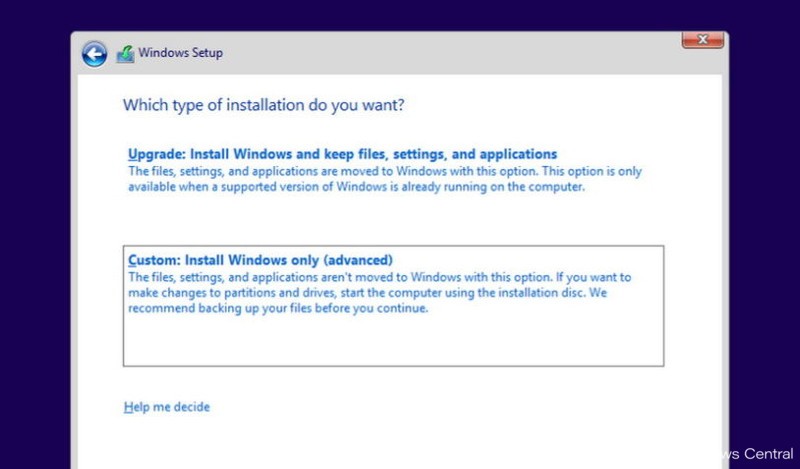
Alternatively, in the same way like you could do in going back to Windows 8.1, you can downgrade from Windows 10 to Windows 7 by doing a clean installation of the operating system. This method is more suited for people that have the time and don’t trust the concept of rolling back.
This process involves having to reinstall the operating system using the Windows 7 installation media, and formatting, which will erase everything on the hard drive. You’ll also need to reinstall all your applications once again, and use a backup to restore all of your files. This process takes more time than other methods, but it will ensure that everything works correctly.
Follow this steps:
- Reboot your computer with Windows 7 installation files (make sure your PC is set to boot from the drive with installation files).
- During the Windows Setup, click Next, accept the licensing, and click Next.
- Click the option Custom: Install Windows only (Advanced) option to do a clean installation.
- Delete any partition created by you current installation of Windows.
- Select the empty drive and click Next to start the installation process.
Important: If you have a partition where you store files or a secondary hard drive, you don’t have to delete these partitions.
